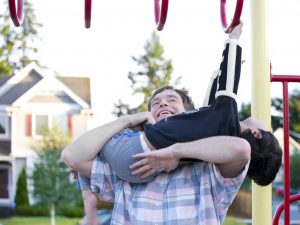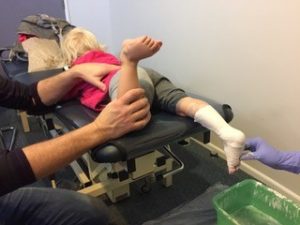Specialising in children’s podiatry

Podopaediatrics is an area of podiatry focused on the diagnosis and treatment of foot disorders in children. Your podopaediatrician (children’ s podiatrist) understands the basic principles of child development, relevant milestones, normal and abnormal development, and commonly occurring foot problems in the child.
Painful legs and feet are common amongst children and adolescents, but pain is by no means normal. Pain should always be investigated if symptoms persist for 48 hours or more, if there is associated falling or tripping or self-withdrawal from sports and activity occurs.
Some of the more common areas of concern for parents include their children’s flat feet, in-toeing, heel pain, toe walking, ingrown toenails, plantar warts and skin rashes, and uneven or rapid shoe wear.
It is important to have your child’s feet evaluated by an experienced children’s podiatrist every year from around the age of four.
Our Resonance podiatrists can educate parents on appropriate footwear and normal development to provide peace of mind and sound management options.
When buying shoes consider these guidelines:
 Have BOTH feet measured when standing as the foot changes when weight bearing
Have BOTH feet measured when standing as the foot changes when weight bearing- Buy shoes for the longer foot, feet are seldom the exact same size
- Shoes should feel comfortable immediately; there is no need to “break them in”
- There should be one child’s thumb width between the end of the longest toe and the end of the shoe
- The toe box should be wide and round, not narrow and pointy
- The heel should be held firmly in place by a fastening device
- Try shoes on with the same sock that they will be worn with
- Get fitted by someone knowledgeable and trained in children’s footwear
- When possible, buy shoes for the specific activity involved e.g. running shoes for running, basketball shoes for basketball
- Comfort is king – or Queen; uncomfortable shoes can lead to pain from compression (in grown nails) or friction (blisters

You must be logged in to post a comment.